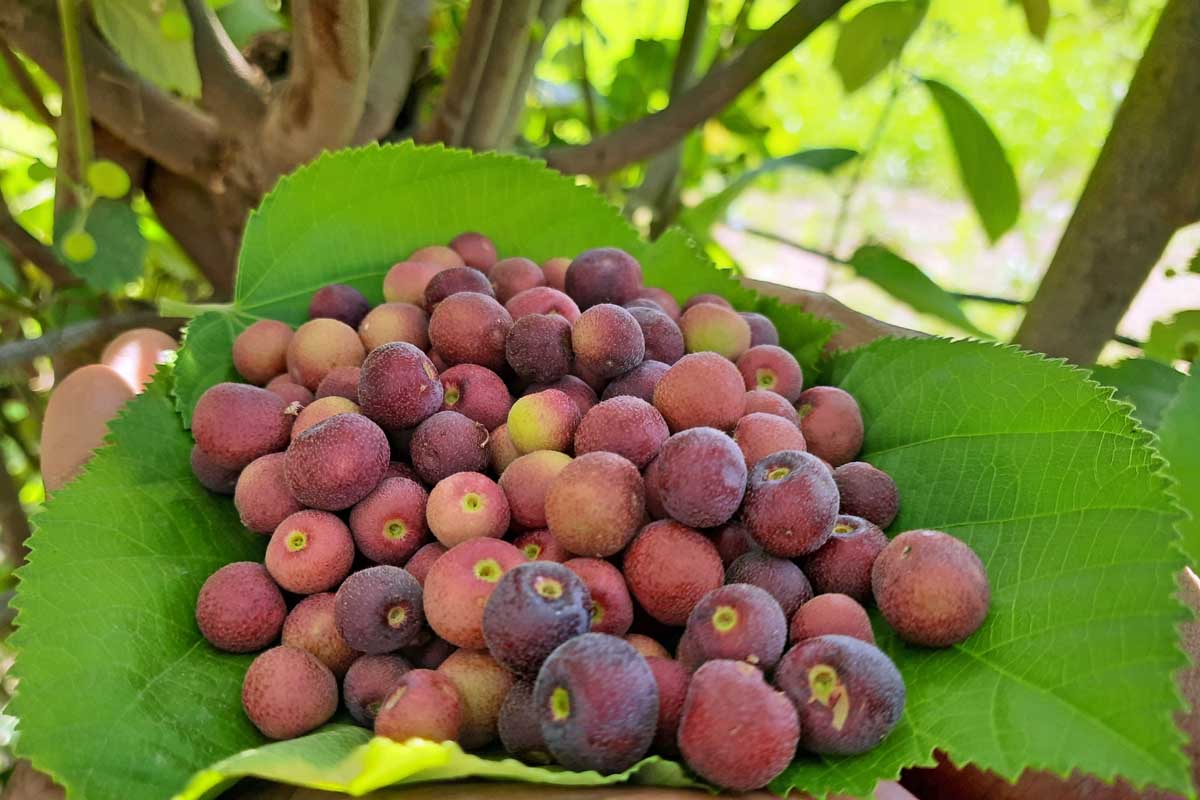
Grewia asiatica, commonly known as Phalsa or Falsa, is a small fruit-bearing shrub native to India and Southeast Asia. This plant produces tiny, tangy berries that are not only delicious but also packed with nutrients. Did you know that Phalsa has been used in traditional medicine for centuries? Its berries are rich in antioxidants, vitamins, and minerals, making them a healthy addition to any diet. But that's not all—the plant itself is quite hardy, thriving in hot, dry climates where other crops might struggle. Whether you're interested in its health benefits, curious about its cultivation, or just love unique fruits, Phalsa has something to offer. Let's dive into 25 fascinating facts about this remarkable plant!
What is Grewia asiatica?
Grewia asiatica, commonly known as Phalsa or Falsa, is a small fruit-bearing shrub native to South Asia. This plant is cherished for its sweet and tangy berries, which are not only delicious but also packed with nutrients. Let's dive into some fascinating facts about this unique plant.
Nutritional Benefits
Phalsa berries are more than just a tasty treat. They offer a range of health benefits that make them a valuable addition to any diet.
- Phalsa berries are rich in vitamin C, which helps boost the immune system.
- They contain antioxidants that protect the body from free radicals.
- The berries are a good source of iron, essential for blood production.
- They provide calcium, which is important for bone health.
- Phalsa berries have fiber, aiding in digestion and preventing constipation.
Medicinal Uses
Beyond their nutritional value, Grewia asiatica has been used in traditional medicine for centuries. Here are some of its medicinal properties:
- The fruit is known to reduce fever and provide relief from heatstroke.
- It has anti-inflammatory properties that help alleviate pain and swelling.
- Phalsa juice is used to treat respiratory issues like asthma and bronchitis.
- The leaves of the plant can be used to heal wounds and cuts.
- It is believed to have anti-diabetic properties, helping to regulate blood sugar levels.
Cultivation and Growth
Grewia asiatica is relatively easy to grow, making it a popular choice for home gardens and small farms.
- The plant thrives in tropical and subtropical climates.
- It requires well-drained soil and plenty of sunlight.
- Phalsa plants can be propagated through seeds or cuttings.
- They are drought-resistant, making them suitable for arid regions.
- The berries are typically harvested twice a year, during the summer and monsoon seasons.
Culinary Uses
Phalsa berries are versatile and can be used in various culinary applications. Here are some popular ways to enjoy them:
- The berries can be eaten fresh or dried.
- They are often used to make juices and sherbets.
- Phalsa can be incorporated into desserts like pies and tarts.
- The berries can be used to make jams and jellies.
- They add a unique flavor to salads and smoothies.
Cultural Significance
Grewia asiatica holds a special place in the cultures of the regions where it is grown. Here are some interesting cultural aspects:
- In India, Phalsa is often sold by street vendors during the summer.
- The fruit is used in traditional remedies and home treatments.
- Phalsa is mentioned in ancient texts for its medicinal properties.
- The plant is sometimes used in religious rituals and ceremonies.
- It is a popular subject in folk songs and literature, symbolizing summer and vitality.
The Final Scoop on Grewia asiatica
Grewia asiatica, or phalsa, packs a punch with its nutritional benefits and medicinal properties. This small fruit is loaded with vitamins, minerals, and antioxidants that boost overall health. It helps with digestion, heart health, and even skin care. Plus, it’s a natural remedy for fevers, inflammation, and respiratory issues.
Growing phalsa isn’t too tricky either. It thrives in tropical and subtropical climates, needing well-drained soil and plenty of sunlight. Whether you’re a gardener or just a fruit lover, phalsa is worth your attention.
So, next time you spot this tiny, purple fruit, remember it’s not just tasty but also a powerhouse of goodness. Give it a try, and you might find a new favorite snack that’s as healthy as it is delicious.
Was this page helpful?
Our commitment to delivering trustworthy and engaging content is at the heart of what we do. Each fact on our site is contributed by real users like you, bringing a wealth of diverse insights and information. To ensure the highest standards of accuracy and reliability, our dedicated editors meticulously review each submission. This process guarantees that the facts we share are not only fascinating but also credible. Trust in our commitment to quality and authenticity as you explore and learn with us.
